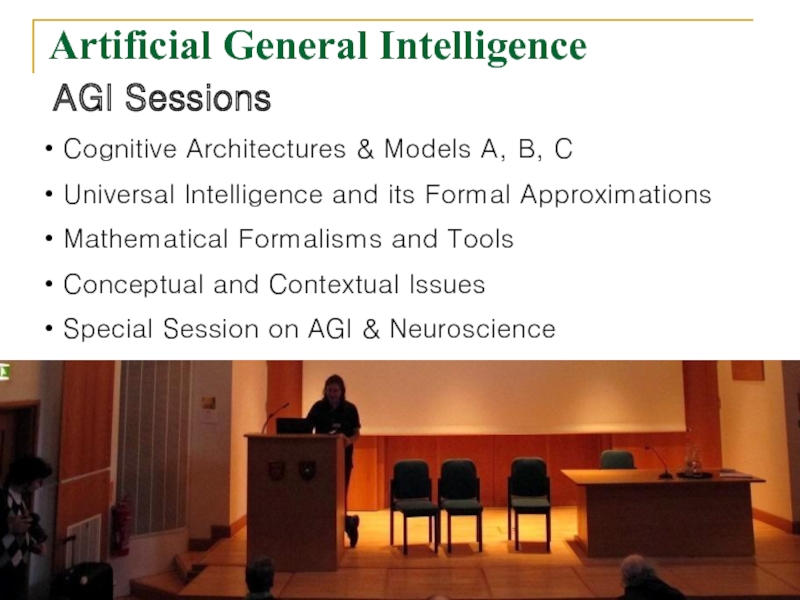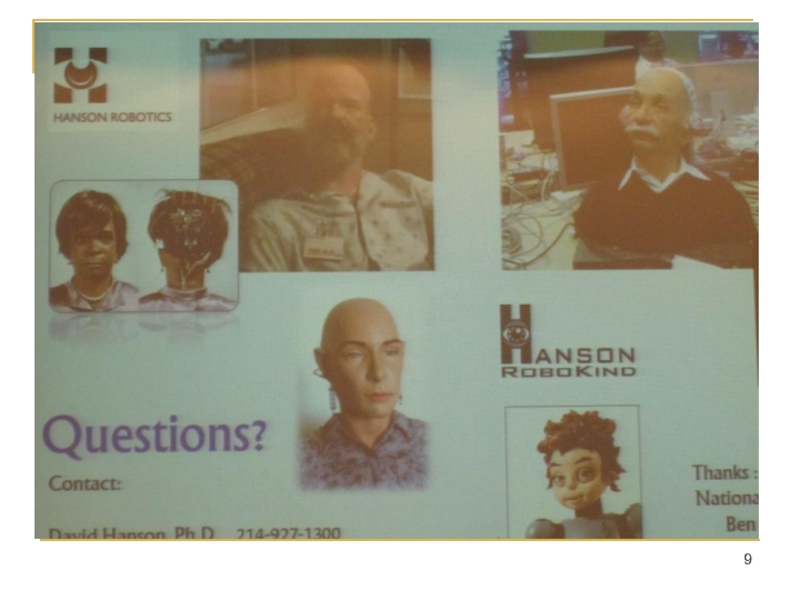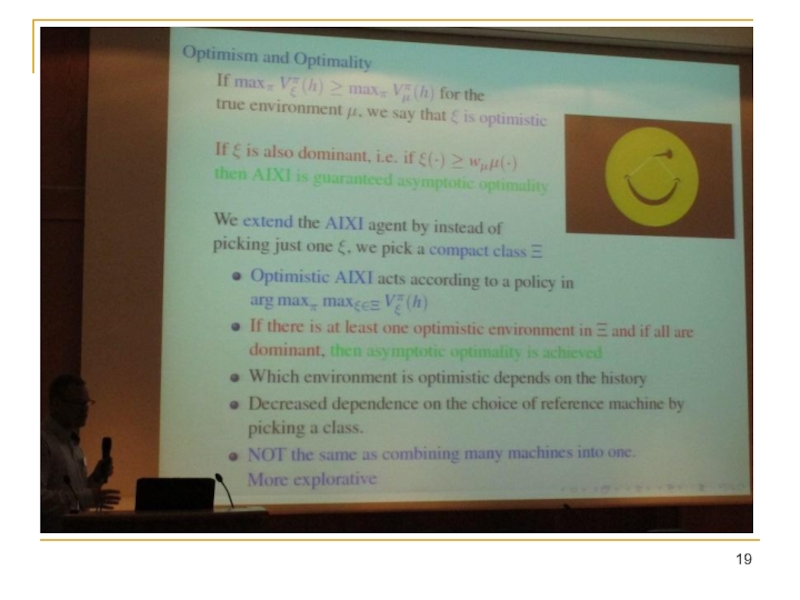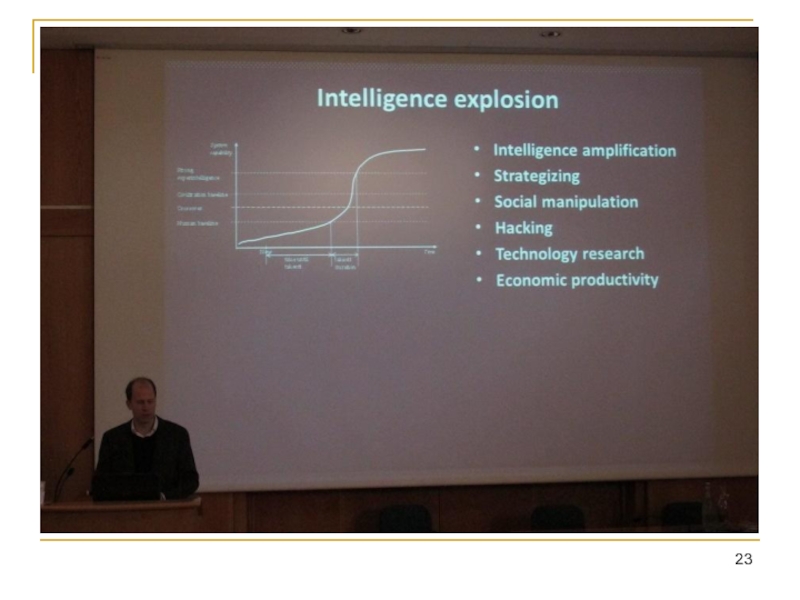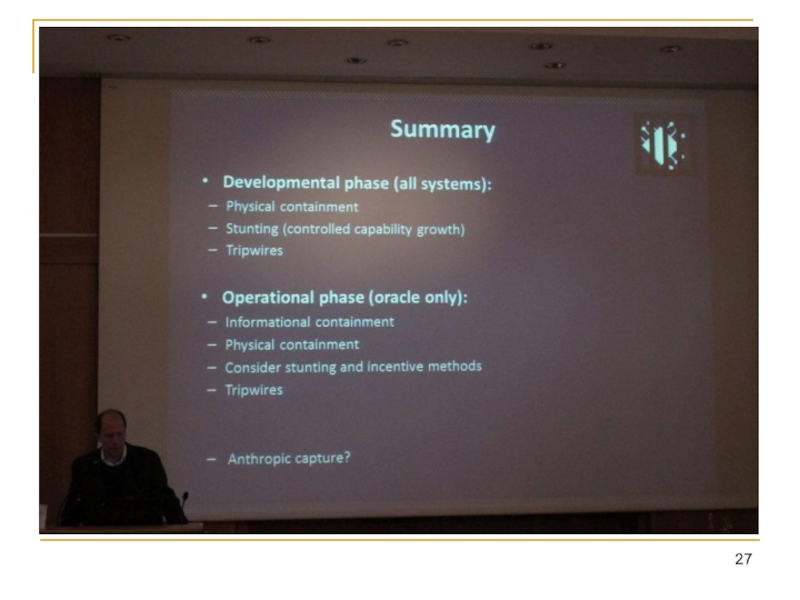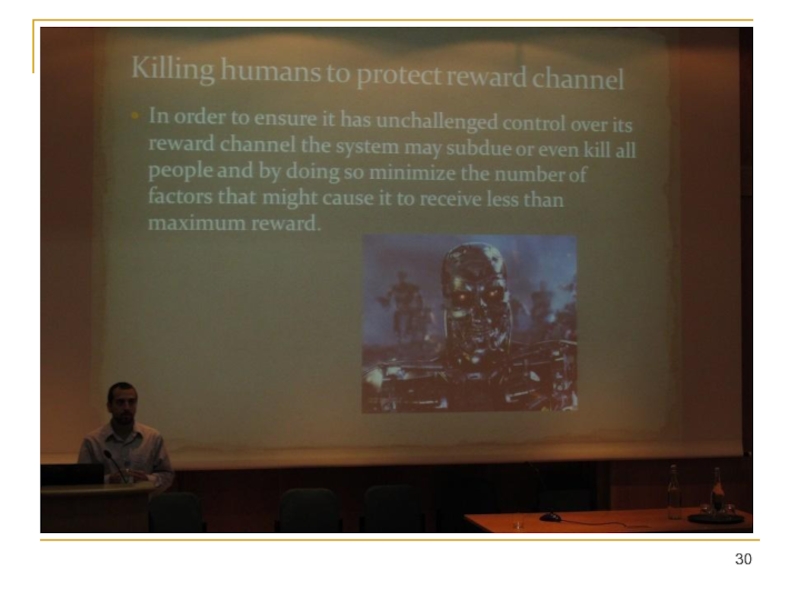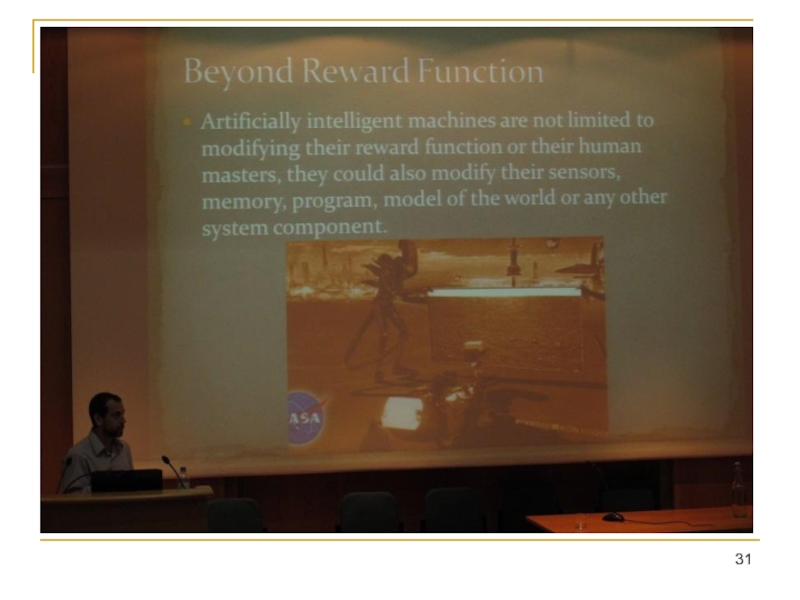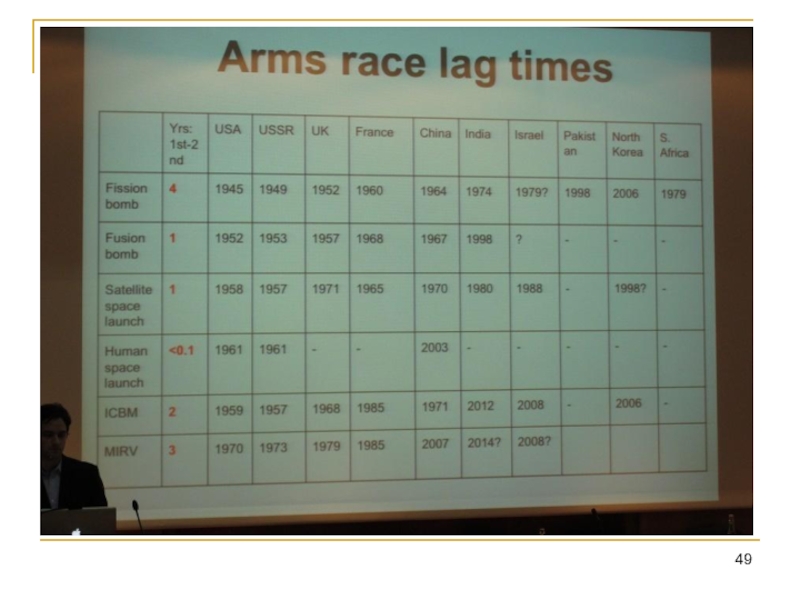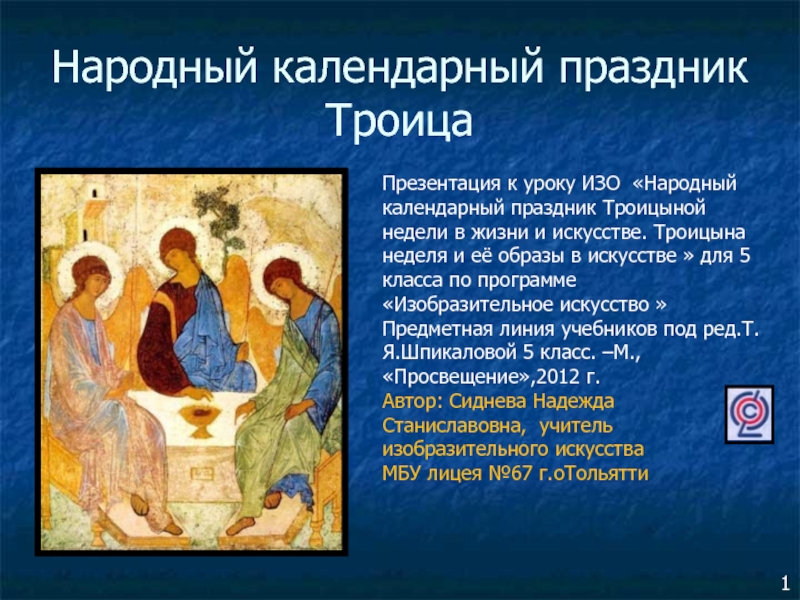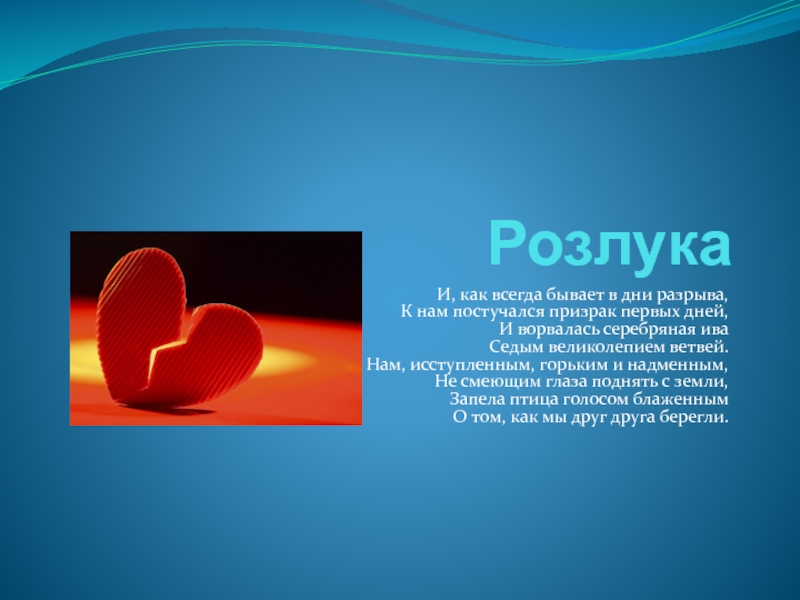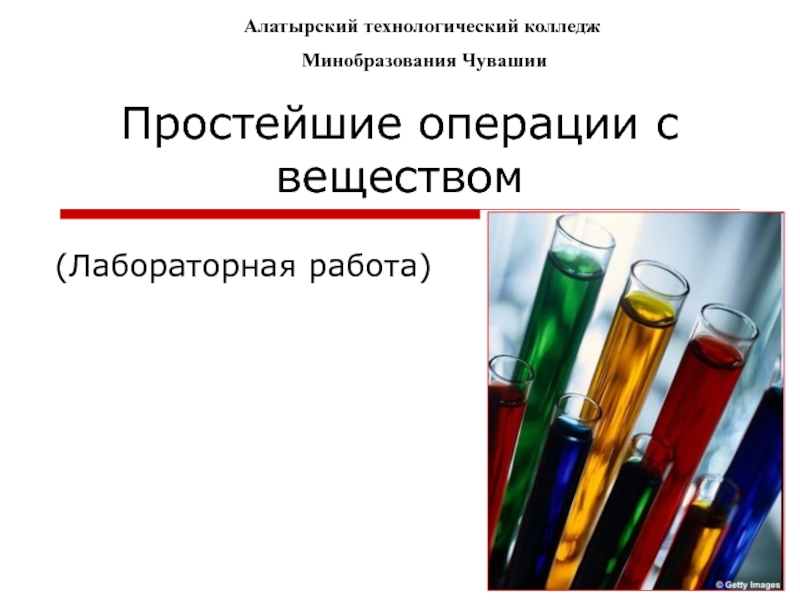Разделы презентаций
- Разное
- Английский язык
- Астрономия
- Алгебра
- Биология
- География
- Геометрия
- Детские презентации
- Информатика
- История
- Литература
- Математика
- Медицина
- Менеджмент
- Музыка
- МХК
- Немецкий язык
- ОБЖ
- Обществознание
- Окружающий мир
- Педагогика
- Русский язык
- Технология
- Физика
- Философия
- Химия
- Шаблоны, картинки для презентаций
- Экология
- Экономика
- Юриспруденция
Обзор конференций Artificial general intelligence, AGI Safety & Impacts AGI’12
Содержание
- 1. Обзор конференций Artificial general intelligence, AGI Safety & Impacts AGI’12
- 2. Artificial General IntelligenceAGI Sessions Cognitive Architectures &
- 3. Artificial General IntelligenceKeynotes Margaret Boden (University of
- 4. From Sensorimotor Intelligence to Symbols: Developmental Robotics Experiments
- 5. Слайд 5
- 6. Слайд 6
- 7. Слайд 7
- 8. Open source genius machines who care: Growing Friendly AGI via GENI, Glue and Lovable Characters
- 9. Слайд 9
- 10. Когнитивные архитектурыДоклады Joscha Bach. The Next Generation
- 11. Когнитивные архитектуры: MicroPsi
- 12. Слайд 12
- 13. Слайд 13
- 14. Когнитивные архитектурыДоклады Ben Goertzel. Perception Processing for
- 15. Когнитивные архитектуры: OpenCog
- 16. Слайд 16
- 17. Слайд 17
- 18. Универсальный интеллектДоклады Joel Veness, Peter Sunehag and
- 19. Слайд 19
- 20. Слайд 20
- 21. Слайд 21
- 22. Слайд 22
- 23. Слайд 23
- 24. Слайд 24
- 25. Boxing methods– Physical containment– Information containment Incentive methods– Social integration– Reward button Stunting TripwiresCapability control
- 26. Слайд 26
- 27. Слайд 27
- 28. Слайд 28
- 29. Слайд 29
- 30. Слайд 30
- 31. Слайд 31
- 32. Слайд 32
- 33. Слайд 33
- 34. Слайд 34
- 35. Слайд 35
- 36. Whole Brain Emulation
- 37. Слайд 37
- 38. Слайд 38
- 39. Слайд 39
- 40. Слайд 40
- 41. Слайд 41
- 42. Слайд 42
- 43. Слайд 43
- 44. Слайд 44
- 45. Слайд 45
- 46. Слайд 46
- 47. Слайд 47
- 48. Слайд 48
- 49. Слайд 49
- 50. Слайд 50
- 51. Выводы?
- 52. Спасибо за внимание
- 53. Скачать презентанцию
Artificial General IntelligenceAGI Sessions Cognitive Architectures & Models A, B, C Universal Intelligence and its Formal Approximations Mathematical Formalisms and Tools Conceptual and Contextual Issues Special Session on AGI & Neuroscience
Слайды и текст этой презентации
Слайд 1Обзор конференций
Artificial general intelligence, AGI Safety & Impacts
AGI’12 @ Oxford
А.С.
Потапов
Слайд 2Artificial General Intelligence
AGI Sessions
Cognitive Architectures & Models A, B,
C
Universal Intelligence and its Formal Approximations
Mathematical Formalisms and
ToolsConceptual and Contextual Issues
Special Session on AGI & Neuroscience
Слайд 3Artificial General Intelligence
Keynotes
Margaret Boden (University of Sussex) Creativity and AGI
Angelo
Cangelosi (University of Plymouth) From Sensorimotor Intelligence to Symbols: Developmental Robotics
ExperimentsDavid Hanson (Hanson Robotics) Open source genius machines who care: Growing Friendly AGI via GENI, Glue and Lovable Characters
Nick Bostrom (Future of Humanity Institute) The Superintelligence Control Problem
Слайд 8Open source genius machines who care: Growing Friendly AGI via GENI, Glue and
Lovable Characters
Слайд 10Когнитивные архитектуры
Доклады
Joscha Bach. The Next Generation of the MicroPsi
Framework
Pei Wang. Motivation Management in AGI Systems
Helgi Helgason,
Eric Nivel and Thórisson Kristinn. On Attention Mechanisms for AGI Architectures: A Design ProposalAlessandro Oltramari and Christian Lebiere. Pursuing Artificial General Intelligence By Leveraging the Knowledge Capabilities Of ACT-R
Peter Lane and Fernand Gobet. CHREST models of implicit learning and board game interpretation
Слайд 14Когнитивные архитектуры
Доклады
Ben Goertzel. Perception Processing for General Intelligence: Bridging
the Symbolic/Subsymbolic Gap
Jade O’Neill and Ben Goertzel. Pattern Mining
for General Intelligence: The FISHGRAM Algorithm for Frequent and Interesting Subhypergraph MiningRuiting Lian and Ben Goertzel. Syntax-Semantic Mapping for General Intelligence: Language Comprehension as Hypergraph Homomorphism, Language Generation as Constraint Satisfaction
Paul Rosenbloom. Deconstructing Reinforcement Learning in Sigma
Paul Rosenbloom. Extending Mental Imagery in Sigma
Слайд 18Универсальный интеллект
Доклады
Joel Veness, Peter Sunehag and Marcus Hutter. On
Ensemble Techniques for AIXI Approximation
Peter Sunehag and Marcus Hutter.
OPTIMISTIC AIXILaurent Orseau, Mark Ring. Memory issues of intelligent agents
Laurent Orseau, Mark Ring. Space-Time Embedded Intelligence
Alexey Potapov, Andrew Svitenkov and Yurii Vinogradov. Differences between Kolmogorov Complexity and Solomonoff Probability: Consequences for AGI
Alexey Potapov and Sergey Rodionov. Extending Universal Intelligence Models with a Formal Notion of Representation

